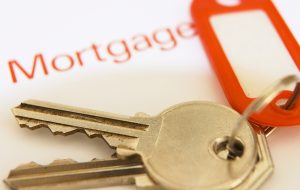Warm Up To a Winterized Home
Friday, November 11th, 2016As the days get colder and darker and we begin to rummage for gloves, hats and scarves, we must also turn our attention to our homes because they, too, need a certain level of protection from winter’s chill.
Inside and out, there are many green ways to safeguard your home from the cold. Not only do you save time and money, but you’re doing your part for the planet, too. So let’s look at ways to winterize our homes the eco-friendly way:

Start by Sealing Leaks – This is a must as even small openings and leaks can add up to big heat loss. Be sure to install your storm windows. If needed, cover windows in plastic to keep cold out and heat in. Check basement windows for leaks and be sure to replace or add worn-out weather stripping around windows and doors. Replace worn doorstops. Caulk and weather strip entry points for ducts and pipes.
Protect Pipes – This is a simple and inexpensive way to protect your house from water damage due to frozen pipes. You should pad exposed pipes in unheated areas. If you don’t know where those are start by looking in your attic, crawl space or basement.
Insulate – Loading up on insulation it a good way to save on your energy bill.
Untap Outside Faucets – Undrained water can freeze, which can cause burst pipes. Disconnect your garden hose and drain the water.
Fix the Furnace – Either have your heating system inspected by a professional or be sure to clean and change your furnace filters. Dirty filters restrict airflow and increase energy demand. Consider installing a programmable thermostat which allows you to turn down the temperature when no one is there or while sleeping.
Change the direction of your ceiling fans – This might seem insignificant, but by reversing the direction of your ceiling fans, you can actually push warm air downwards and cut your heating costs by as much as 10 per cent. In winter, your fan should turn clockwise.
Fireplace safety – You should have your fireplace inspected and cleaned by a professional.
Roll Up the Barrel – Be sure to release all water from your rain barrel and dump them upside down for thorough drainage. Remove hoses and rain spout diverter. Clean debris from the barrel and its filter screen. If you have space, store in your basement or garage to protect from further damage.
Draft Defense – There is a very easy and economical way to fight drafts, which can waste between 5 and 30 per cent of you energy usage. Take an old towel, scraps of fabric or a necktie and fill with sand or kitty litter for weight. This gives you a draft stopper that you can run at the base of your door to prevent warm air from escaping.
Clean your gutters – Clogged gutters can cause a leaky roof or water damage to other parts of your home.
Wear Woollies – Instead of walking around in a thin t-shirt this winter, throw on a sweater and turn down your thermostat. There’s no need to blast the heat when a warm hoodie or pullover will do the same job.

